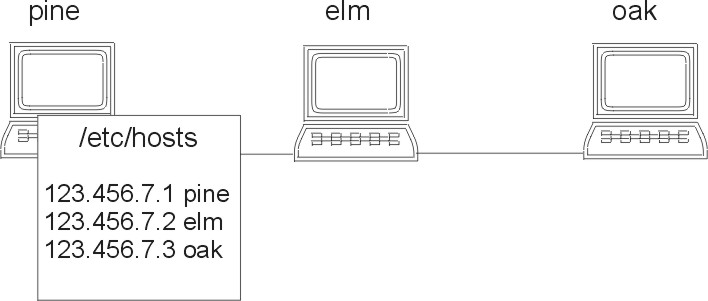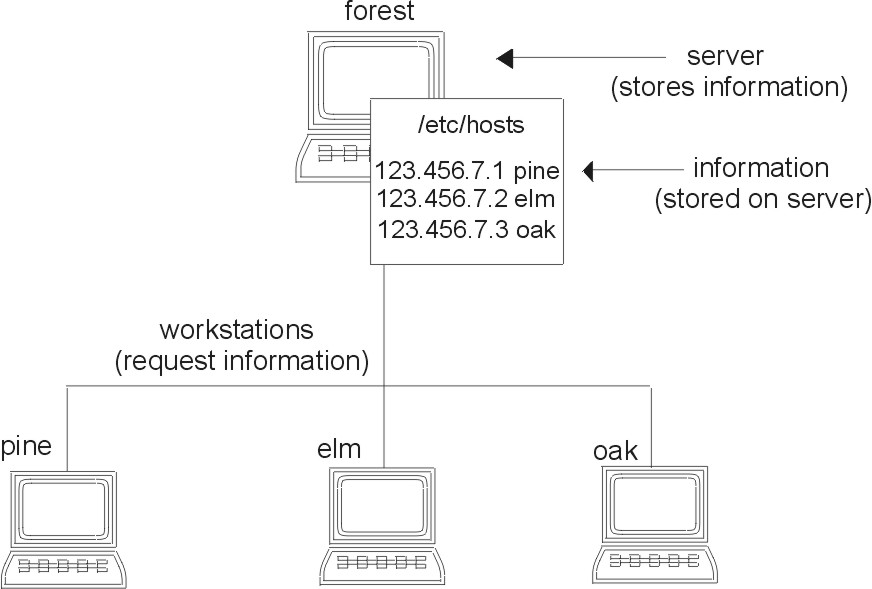
Name services store information that allows users, workstations, and applications to communicate across the network. Without a name service, each workstation would have to maintain its own copy of such information as machine addresses, user names, passwords, and network access permissions. With name services, the information may be stored in centrally located files or database tables, which makes it easier to administer large networks.
For example, the following figure shows a simple network of three workstations, pine, elm, and oak. Before pine can send a message to either elm or oak, it must know their network addresses. A file called /etc/hosts stores the network address of every workstation in the network, as shown in the second figure. Likewise, for elm and oak to communicate with pine or with each other, they must keep similar files.
Figure 1-1. Example of Simple Network. Three connected workstations, named pine, elm, and oak, respectively.
 |
Figure 1-2. Storing Names and Addresses for Connected Workstations. The pine, elm, and oak workstations with workstation pine displaying a simplified /etc/hosts file of IP addresses for each workstation.
 |
Addresses are not the only network information that workstations need to store. They also need to store security information, mail information, information about their Ethernet interfaces, network services, groups of users allowed to use the network, services offered on the network, and so on. As networks offer more services, the list grows. As a result, each workstation may need to keep an entire set of files similar to /etc/hosts.
When any of this information changes, administrators must keep it current on every workstation in the network. On a medium or large network, the job becomes not only time-consuming but nearly unmanageable. A network information service simplifies the solution by storing network information on servers and providing it to workstations when requested. This process is shown in the following figure.
Figure 1-3. Storing Network Names and Addresses for Name Service. The pine, elm and oak workstations receiving /etc/hosts information from a higher server, named forest.
 |
The workstations are known as clients of the server. Whenever information about the network changes, instead of updating each client's local file, an administrator updates only the information stored by the network information service. This reduces errors, inconsistencies between clients, and the sheer size of the task.
Although the chief purpose of a network information service is to centralize information, another is to simplify network names. A network information service enables workstations to be identified by common names instead of numerical addresses. (This is why these services are sometimes called name services.) Communication is simpler because users do not have to remember cumbersome physical addresses, such as 129.44.3.1. Instead, they can use descriptive names, such as Sales, Lab2, or Arnold.
Names are also more flexible than physical addresses. While physical addresses and networks tend to remain stable, the organizations that use them tend to change structure and nomenclature. A network information service uses software to map these changes to an unchanged physical network.